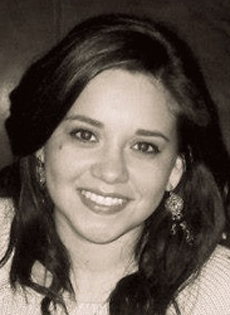
Praying in the language of the saints
Monday, August 19, 2013
*Blanca Morales
Sheer curiosity is what led me to first attend Mass in the Extraordinary Form. I had heard of the terms Missa Cantata, High Mass, Tridentine Rite or Traditional Latin Mass, but didn’t know they all referred to the same thing: Mass as celebrated in the time-honored tradition of centuries past.
I knew very little about the Traditional Latin Mass, which had fallen into disuse after the Second Vatican Council. I also didn’t know that in 2007, Pope-emeritus Benedict XVI made it easier for priests to celebrate the Latin Mass in his motu propio Summorum Pontificum. In this apostolic letter, Pope Benedict XVI noted that the form of Mass which had nourished the faith of so many generations should be made more widely available, though the newer form of the Mass, as celebrated in most of our parishes today, must continue to be recognized for its value and holiness. It would be inconsistent, he said, to exclude the new rite as illegitimate.
Being a part of what many call “the JP2 generation,” my only association with Mass has been in the post-Vatican II “ordinary” (normal) form, which introduces a lot of youth-friendly modernisms such as contemporary praise music.
Looking to explore something new and different, I entered the quaint Spanish-revival church, the Mission of Sts. Francis and Clare, with preconceived notions of Latin Mass that had been given to me by the media.
Great was my surprise when a great majority of attendees were people of my own generation. Indeed, Pope Benedict noted the demand for greater use of the 1962 missal was not just made by those who grew up with it, but by younger generations who felt an attraction to it and found in it a “a form of encounter with the mystery of the Most Holy Eucharist which suited them particularly well.”
The moment Mass began, I was swept into this very mystery in more ways than one.
Being completely unacquainted with this form of the Mass, I stumbled through the Missal, trying to follow in Latin and translating in English. I began to grow a bit frustrated. I knew the new rite like the back of my hand, and now I felt like many a convert must feel when attending their first Mass: confused.
In a time and age when we like to have control of our surroundings, I didn’t like the feeling of not knowing what to do. I was unused to surrendering, but that was exactly what I needed to do.
I closed the Missal and put it aside. I decided to just experience the Mass. That’s when it all changed.
As I listened to prayers chanted in Latin, saw trails of incense floating in the air, and observed the priest offer up the Mass, I realized, this is exactly how centuries of Catholics celebrated Mass. Suddenly, I felt transported outside the constraints of time and space.
I always knew we Catholics are united in the Eucharist, but now, at Latin Mass, the term “universal church” carried a fuller, deeper meaning.
At a Mass like this one, St. Therese of Lisieux or Blessed Pier Giorgio Frassati recited the same Credo, prayed the same Pater Noster, responded with the same “et cum spiritu tuo.” Now, more than ever, I felt united with the communion of saints: I was praying in the same language they prayed in. They no longer seemed so distant.
As I continued to enjoy the mystery of it all, no greater sense of surrender came than at the time of Communion. In Latin Mass, it is tradition to kneel for Communion and receive the host on the tongue.
I was in a bit of a panic. I had only been taught to receive Communion by hand. And here, there was no option for reception of Communion. I couldn’t have things “my way” as if Mass were a fast-food joint.
As I made my way down the center aisle toward the altar, I felt as jittery as a bride on her wedding night, receiving her groom for the first time. And that’s exactly what was happening: I was receiving the Bridegroom in a way I had not experienced.
At that moment, I stopped thinking and let my focus be on Him alone. I refused to worry about my surroundings, or whether I knew what I was doing. “Let go and let God,” was on my mind and I did the only thing I could do: submit.
And I did. It was not the awkward situation I thought it would be, and the feeling of surrender from that first experience was so liberating that I find that this is how I now prefer to receive communion.
I returned to Latin Mass in the weeks that followed, being attracted to the indescribable beauty of tradition, sacred music, and reverence.
Slowly but surely I am learning the prayers and responses, my Latin vocabulary increasing with each new visit. I am learning deeper truths about the celebration of the Lamb’s Supper. I also now know why the priest in my Children’s Missal was “facing the wrong way,” as I had observed as a child.
I cannot say whether or not I will become a traditionalist Catholic; I am in no way foregoing the novus ordo which has brought Mass to the nations in the language they know. I can say, however, that attending Latin Mass is a bit like finding a hidden treasure box and discovering all the beauty that lies within. It is in every way extraordinary.


Comments from readers
-T
www.ecclesiaelatina.com
The Boomers and the middle-aged are those who are the ones truly missing out today. I can't tell you how many times when I asked what church I go to, and I tell them, I get the appalled look of shock from the people of that age group. Only that age group. My peers and those younger than me, and the people over 65 - almost never am I met with any hostility, but only curiousness or acceptance.
The traditional form of the Mass is not the only form - but then again it never was, there are DOZENS of Rites in the Catholic Church that are as old as the Roman Rite that most are familiar with. We can all live in harmony, if only those who are prejudiced against us will learn tolerance.
To anyone who may be inspired by her story to seek out and discover (or rediscover) a traditional liturgy, do not let the small-minded naysayers of this world dissuade you from making up your own mind!